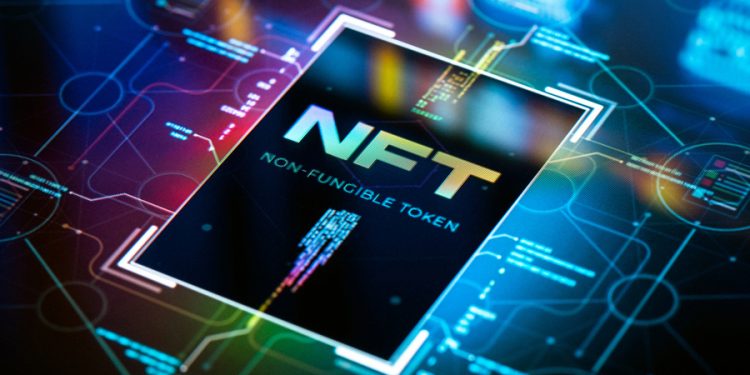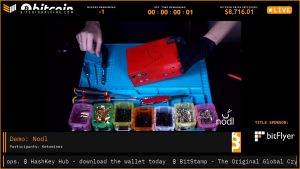NFTs have witnessed significant growth in recent years, but along with their popularity comes the need to address security vulnerabilities. In this article, we will explore several case studies of NFT security incidents and the valuable lessons that can be learned from each.
Introduction
Importance of Studying NFT Security Incidents
Examining past NFT security incidents helps us understand the potential risks and vulnerabilities associated with these digital assets. By analyzing these cases, we can identify common patterns, improve security measures, and promote better practices within the NFT ecosystem.
NFT Security Incident 1: The Beeple Hack

Overview of the Incident
In March 2021, a hacker gained unauthorized access to the NFT marketplace hosting Beeple’s artwork. The hacker replaced the original NFTs with counterfeit ones, resulting in substantial financial losses for buyers and damage to the reputation of the marketplace.
Lessons Learned
- Robust Authentication and Authorization: Implement strong authentication and authorization mechanisms to prevent unauthorized access to NFT marketplaces and artist accounts. Multi-factor authentication and secure login protocols are essential.
- Regular Auditing and Monitoring: Conduct regular security audits and monitoring of NFT marketplaces to detect any suspicious activities, unauthorized changes, or tampering with NFT listings. Prompt detection can help mitigate potential risks.
NFT Security Incident 2: The Copycat Scam
Overview of the Incident
In this incident, scammers created fake NFT collections imitating popular artists and minted counterfeit NFTs. Unsuspecting buyers purchased these fraudulent NFTs, resulting in financial losses and damage to the reputation of the artists.
Lessons Learned
- Thorough Verification and Validation: Verify the authenticity of NFT collections and artists before making any purchases. Conduct due diligence, research the artists’ official channels, and verify the legitimacy of the marketplace or platform hosting the NFTs.
- Educating the Community: Promote user education and awareness about the risks of counterfeit NFTs and the importance of verifying the authenticity of artists and their collections. Encourage buyers to be cautious and do their research before making any transactions.
NFT Security Incident 3: The Fake Marketplace
Overview of the Incident
In this incident, scammers created a fake NFT marketplace that closely resembled a popular and reputable platform. They tricked users into depositing their NFTs and funds, resulting in significant losses for those who fell victim to the scam.
Lessons Learned
- Official Communication Channels: Rely on official communication channels, such as verified websites, social media accounts, and official announcements, to access NFT marketplaces. Be cautious of phishing attempts and suspicious links that lead to fake platforms.
- Double-Check URLs and Certificates: Verify the website URL and ensure it matches the official domain. Look for SSL certificates, indicated by a padlock icon in the browser address bar, to confirm the legitimacy and security of the website.
NFT Security Incident 4: The Exploited Smart Contract
Overview of the Incident
In this incident, an attacker discovered a vulnerability in a smart contract powering an NFT platform. They exploited the vulnerability to manipulate the NFT metadata, resulting in the unauthorized minting and distribution of counterfeit NFTs.
Lessons Learned
- Smart Contract Audits: Conduct thorough security audits of smart contracts before deployment to identify and mitigate potential vulnerabilities. Engage experienced auditors to review the code, assess potential risks, and recommend improvements.
- Regular Updates and Patching: Stay up to date with the latest security patches and updates for smart contracts. Promptly address any identified vulnerabilities and deploy updated versions of the smart contracts to protect against known exploits.
NFT Security Incident 5: The Social Engineering Attack
Overview of the Incident
In this incident, scammers employed social engineering techniques to deceive NFT holders into sharing their private keys or granting access to their wallets. This led to unauthorized transfers of NFT assets and financial losses for the victims.
Lessons Learned
- Be Cautious of Social Engineering Tactics: Be vigilant and skeptical of unsolicited requests for personal information, private keys, or access to wallets. Avoid sharing sensitive information with unverified individuals or entities.
- Education and User Awareness: Educate NFT holders about common social engineering tactics and how to identify and avoid them. Promote user awareness to prevent falling victim to these manipulative techniques.
NFT Security Incident 6: The Token Swap Scam
Overview of the Incident
In this incident, scammers created fraudulent token swap platforms that promised users the opportunity to exchange their NFTs for other valuable tokens. However, once users transferred their NFTs, the scammers disappeared, leaving victims without their NFTs or any tokens in return.
Lessons Learned
- Research and Due Diligence: Before engaging in any token swap platforms or exchanges, thoroughly research and verify their legitimacy. Look for reviews, user feedback, and community discussions to ensure the platform is reputable and trustworthy.
- Use Trusted Platforms: Stick to well-known and established platforms for token swaps. Trusted platforms have a track record of security and are more likely to have measures in place to protect users from fraudulent activities.
NFT Security Incident 7: The Insider Breach
Overview of the Incident
In this incident, an individual with insider access to an NFT marketplace abused their privileges and stole valuable NFT assets. The breach resulted in significant financial losses for affected users and raised concerns about internal security protocols.
Lessons Learned
- Strict Access Controls: Implement stringent access controls within NFT marketplaces to restrict privileged access and ensure that only authorized individuals can perform critical actions. Regularly review and update access permissions based on roles and responsibilities.
- Monitoring and Auditing: Maintain robust monitoring and auditing mechanisms to detect and identify any suspicious activities or unauthorized access attempts by insiders. Regularly review logs and investigate any anomalies promptly.
NFT Security Incident 8: The Malware Attack
Overview of the Incident
In this incident, users unknowingly downloaded malware onto their devices, which granted attackers access to their NFT wallets. The attackers then stole the victims’ private keys and transferred their NFT assets to their own wallets.
Lessons Learned
- Secure Device Practices: Practice good security hygiene on your devices by keeping software and antivirus programs up to date. Avoid downloading files or applications from untrusted sources and be cautious of suspicious links or email attachments.
- Cold Storage and Hardware Wallets: Consider using hardware wallets or cold storage solutions to store your private keys offline. These physical devices provide an additional layer of protection against malware attacks.
NFT Security Incident 9: The Unauthorized Third-Party Integration
Overview of the Incident
In this incident, a third-party integration that claimed to offer additional functionalities for NFT wallets gained access to users’ wallets without proper authorization. The integration turned out to be malicious, leading to unauthorized transfers and compromised NFT assets.
Lessons Learned
- Trustworthy Integrations: Only use third-party integrations or services that have been vetted and verified as trustworthy. Research the integration, read reviews, and ensure that it is reputable and widely used within the NFT community.
- Permission Management: Be cautious when granting permissions or authorizations to third-party integrations. Review the permissions required and consider the potential risks before allowing access to your NFT wallet or assets.
NFT Security Incident 10: The DNS Hijacking
Overview of the Incident
In this incident, attackers hijacked the DNS (Domain Name System) of an NFT marketplace, redirecting users to a fake website that closely resembled the legitimate platform. Users unknowingly entered their login credentials, enabling the attackers to gain unauthorized access to their accounts and NFT assets.
Lessons Learned
- DNS Security Measures: Implement DNS security measures, such as DNSSEC (Domain Name System Security Extensions), to protect against DNS hijacking and domain spoofing. DNSSEC ensures the authenticity and integrity of DNS responses.
- Two-Factor Authentication (2FA): Enable 2FA as an additional layer of protection for your NFT marketplace accounts. Even if attackers manage to obtain login credentials, they would still require the second factor (such as a unique code from an authentication app) to gain access.
NFT Security Incident 11: The Insider Trading
Overview of the Incident
In this incident, an individual with insider knowledge of upcoming NFT releases or collaborations used that information to their advantage, acquiring rare NFTs before the public release. This unfair advantage led to concerns about the integrity and fairness of the NFT ecosystem.
Lessons Learned
- Ethical Guidelines and Policies: Establish clear ethical guidelines and policies within NFT marketplaces and collaborations to prevent insider trading and maintain a level playing field. Encourage transparency and fair practices to foster trust among the community.
- Confidentiality and Non-Disclosure Agreements: Implement confidentiality agreements and non-disclosure agreements (NDAs) for individuals involved in NFT releases and collaborations to prevent the unauthorized disclosure of sensitive information. Enforce strict consequences for breaches of confidentiality.
NFT Security Incident 12: The Cross-Site Scripting (XSS) Attack
Overview of the Incident
In this incident, attackers exploited a vulnerability in an NFT marketplace’s website, injecting malicious code via user-generated content. This allowed them to steal user credentials, manipulate NFT listings, or perform unauthorized transactions.
Lessons Learned
- Input Validation and Sanitization: Implement rigorous input validation and sanitization measures on user-generated content within NFT marketplaces to prevent cross-site scripting (XSS) attacks. Filter and sanitize user input to mitigate the risk of code injection.
- Regular Security Audits: Conduct regular security audits of NFT marketplace websites to identify vulnerabilities and potential attack vectors. Engage security professionals to perform penetration testing and vulnerability assessments.
NFT Security Incident 13: The Supply Chain Attack
Overview of the Incident
In this incident, attackers compromised the software supply chain of an NFT wallet or marketplace, injecting malicious code into an update or dependency. This allowed them to gain unauthorized access to user wallets, manipulate transactions, or steal NFT assets.
Lessons Learned
- Secure Software Development Practices: Follow secure software development practices, such as code reviews, testing, and continuous monitoring, to ensure the integrity and security of NFT wallet and marketplace software. Verify the authenticity and integrity of software updates and dependencies before installing them.
- Dependency Management: Regularly review and update software dependencies, ensuring they come from trusted sources. Maintain a minimal and well-audited list of dependencies to reduce the attack surface and potential risks.
Conclusion
Studying NFT security incidents and the lessons learned from each provides valuable insights into the potential risks and vulnerabilities in the NFT ecosystem. By implementing best practices, conducting due diligence, utilizing secure platforms, and practicing good device hygiene, individuals can better protect their NFT assets and contribute to a more secure NFT environment.









